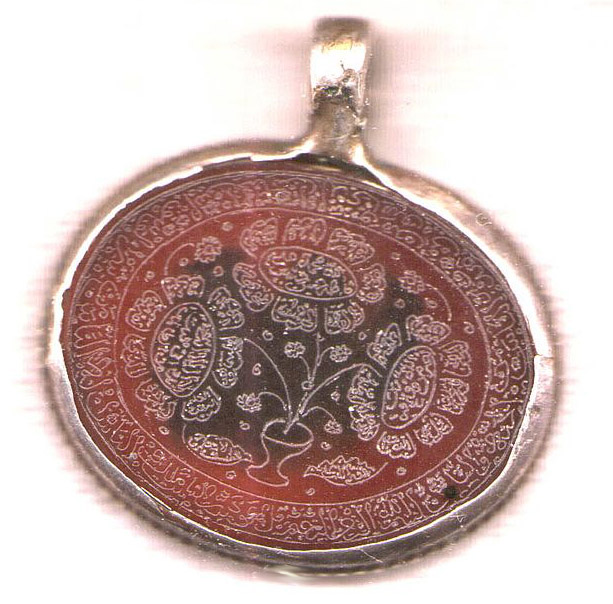FWP:
SETS == EXCLAMATION; WORDPLAY
WRITING: {7,3}
For background see S. R. Faruqi's choices. This verse is NOT one of his choices; I thought it was interesting in its own way and have added it myself. For more on Ghalib's unpublished verses, see the discussion in {4,8x}.
This is an ultimately simple, primitive verse of wordplay , as both Asi and Gyan Chand note. 'Dust-script' is a style of calligraphy in which the letters are so tiny that they appear to be parts of larger images or calligraphic designs. Only when looking very, very closely can one perceive that within the crests of ocean waves, or already-tiny flowers (as in the two examples below), there are microscopic words and phrases, almost as small as dust-motes.
The verse is so primitive that its entire interpretive apparatus is already available in the literal and metaphorical meanings of kudūrat (see the definition above). There just unabashedly, unarguably, isn't anything else going on in the verse. Since it's an opening-verse it has less room than usual, and it still feels full of verbiage-- and that too, of a self-pitying, whining kind. It's nothing but an exclamation, and not a particularly exciting one at that. Isn't it remarkable to catch our masterful poet at his unmasterful worst? In other kinds of his second-rate verses, there's often room to imagine that there might be more going on than we have seen; but not in this case. Nobody could regret that a verse like this one didn't make it into the divan.
On the heart as a mirror on which the 'dust' of ill-feeling can settle, see {128,1}. Compare the similar kudūrat and ġhubār imagery of {76,6x}. Another calligraphy verse: {96,8x}. Another ḳhat̤t̤-e ġhubār verse: an unpublished one from {187} (use the Raza link to find it). There's also the ḳhat̤t̤-e ʿajz of {441x,6}.
A much more effective verse about the techniques of writing: {143,1}.


Asi:
In this verse there's only a puzzle/maze [gorakh-dhandā] of words. He says that even if you write me a letter, then you write in 'dust-script', and from that the vexation/'dirtiness' of your heart is revealed.
== Asi, p. 143